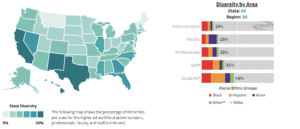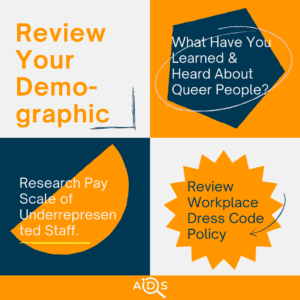Universities’ Concentrated Hiring from Elite Institutions
It is true that many universities in the United States tend to hire their tenure-track faculty members from a limited number of prestigious institutions. This trend has been observed for several decades, and it has important implications for the academic job market and for the diversity and quality of faculty at different institutions.
Following Reputation of Institutions not Individuals
One reason why universities tend to hire faculty members from elite institutions is that these institutions have a reputation for producing highly qualified and well-trained scholars. Many of these institutions have extensive resources for research and scholarship, and they attract top faculty and students from around the world. As a result, graduates from these institutions are often highly sought after by hiring committees at other universities.
Safe Bet Candidates
Another reason why universities may prefer to hire faculty members from elite institutions is that they are perceived to be a “safe bet.” Hiring a candidate from a top institution can provide some assurance that the individual is well-qualified and has a strong record of research and scholarship. Additionally, hiring from a limited pool of institutions may help to ensure that new faculty members are a good “fit” for the culture and academic standards of the institution.
Limiting Diversity
However, this hiring pattern can also have negative consequences. One concern is that it may limit the diversity of perspectives and experiences among faculty at different institutions. If universities are primarily hiring from the same handful of elite institutions, they may be missing out on talented scholars from other institutions or from underrepresented backgrounds. This lack of diversity can be detrimental to the quality of research and teaching at universities, as well as to the experiences of students from diverse backgrounds.
Brain Drain
Another concern is that this hiring pattern may contribute to the “brain drain” phenomenon, where elite institutions draw talent away from other institutions and create a concentration of intellectual and academic resources in certain regions or areas. This can have a negative impact on the overall health and diversity of the academic job market, as well as on the communities and regions that are left behind.
Broaden Hiring Pool to Increase Diversity
To address these concerns, universities can take proactive steps to broaden their hiring pools and ensure that they are considering candidates from a wide range of institutions and backgrounds. This can involve reaching out to a wider range of institutions and actively recruiting candidates from underrepresented backgrounds. Additionally, universities can consider alternative measures of academic excellence beyond institutional prestige, such as teaching experience or community engagement. By taking these steps, universities can help to ensure that they are hiring the best possible candidates and promoting a diverse and inclusive academic environment.
Academic Diversity Search is designed to pool candidates that have a wide range of backgrounds and expertise. We can help to change your hiring bias to build a more robust and inclusive community in your organization.
Additional Resources:
- “The Academy’s Dirty Secret” by Kevin Carey, published in The Chronicle of Higher Education on May 16, 2014, discusses the concentration of faculty hiring at a small number of elite institutions: https://www.chronicle.com/article/the-academys-dirty-secret/
- “Why Elite-College Admissions Need an Overhaul” by Richard V. Reeves and Nathan Joo, published in The Atlantic on March 23, 2018, discusses how the concentration of talent at elite institutions can have negative consequences for the broader society: https://www.theatlantic.com/education/archive/2018/03/why-elite-college-admissions-need-an-overhaul/556247/
- “The Role of Prestige in Academic Hiring” by Benjamin Schmidt, published in Sociological Science in 2017, analyzes data on faculty hiring patterns and finds evidence of a “prestige bias”: https://doi.org/10.15195/v4.a5
- “Faculty Diversity: Too Little for Too Long” by the American Council on Education, published in 2019, provides an overview of the challenges and opportunities for promoting diversity in faculty hiring: https://www.acenet.edu/Documents/Faculty-Diversity-Too-Little-for-Too-Long.pdf
- “The Effects of Elite University Attendance on Job Market Outcomes: Evidence from a Regression Discontinuity Design” by Stacy Berg Dale and Alan B. Krueger, published in the Quarterly Journal of Economics in 2011, examines the relationship between attending an elite university and subsequent career outcomes: https://doi.org/10.1093/qje/qjr001
These sources provide a range of perspectives on the hiring patterns of US universities and their implications for the academic job market and for diversity and inclusion in higher education.







